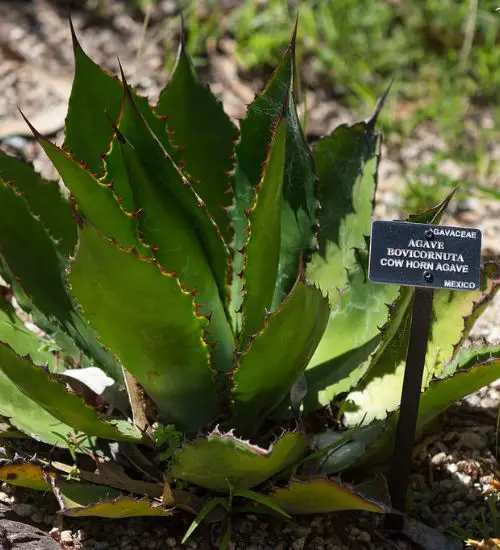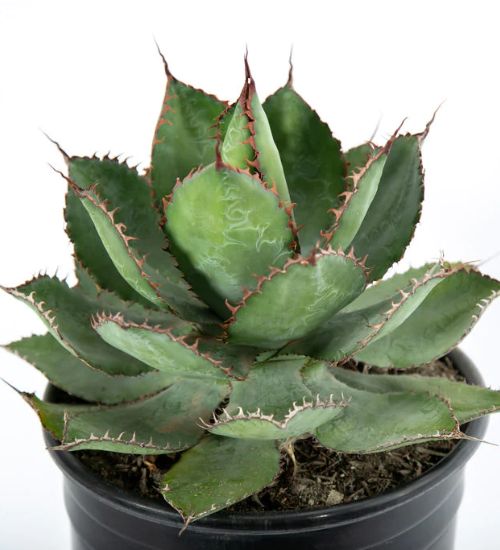Sun: Full sun to light shade
Water: Typical water needs for a succulent
Temperature: Zone 8b from 15° F to 20° F (-9.4° C to -6.7° C) to Zone 11b from 45° F to 50° F (7.2° C to 10° C)
Winter Survival: Cold hardy
Propagation: seeds
Flower: mid-winter to spring
Flower Type: Yellow
Toxic: Can be toxic to humans and animals
Dormant: winter
Space Requirement: Outdoors
Common Problems: pests
Where to buy Agave Bovicornuta?
Basc Care for Agave Bovicornuta
Watering
Can you water your succulent more than what its need? The answer is yes and no. In extreme conditions, you can water your plants more often when you notice the soil is completely dry.
One simple tip for you is that you can use some online apps to check the soil status before you go water your succulents. I would recommend the ThePlantsCheck app, it has some nice features there.
Fertilizing
Only feed this succulent during its active growing seasons which means no information. Use the right fertilizer applied in the right amounts. Applying half-strength balanced fertilizer every month or so is recommended for optimal results.
Do not fertilize during winter as the plant is dormant.
Sun & Location Requirements for "Agave Bovicornuta"
Agave Bovicornuta thrives in full sun to light shade. This means that it should be exposed to direct sunlight for most of the day for optimal growth and health. Make sure your succulent is placed in a spot where it will receive no more than 5 hours of shade each day.
Agave Bovicornuta is a member of the Agave family and is known for being cold hardy. It is able to survive temperatures down to 0°F, making it an ideal choice for areas with cold winters. The succulent's thick leaves and stems help retain moisture in its cells, allowing it to survive through frigid temperatures. Additionally, the colorful foliage of Agave Bovicornuta adds a festive touch to any garden in cold areas.
Any succulents in the group will need a large space to grow. You should place your pot outdoor. Since this plant needs a lot of space than other succulents, you should consider not planting them together with other succulents/plants.
Agave Bovicornuta also benefits from some indirect light throughout the day as well, so make sure you give it enough space to soak up light without becoming too exposed to heat.
Propagation
Growing Agave Bovicornuta from seeds is an easy and economical way to produce more plants. Identify a healthy seed by its plumpness, dark color and slightly sticky texture. Once the potting mix has been pre-mixed with well-draining soil, sow the seeds evenly and press lightly into the surface. To ensure germination, keep the container in bright but indirect light and mist the soil gently with a spray bottle.
Toxicity

The toxicity of Agave can vary depending on the individual species, but all species are potentially dangerous if ingested. Symptoms of poisoning may include vomiting, abdominal pain, diarrhea and dizziness. If you believe someone has ingested parts of Agave Bovicornuta, seek medical help immediately.
Pests and Diseases
Agave Bovicornuta can be affected common pests and diseases like most of the other succulents such as mealybugs and scale insects.
If you do spot any of pest signs, you can treat your succulent using below methods.
- Mealybugs: quarantine, clean infected plants, soapy water.
- Scale insects: quarantine, clean infected plants, soapy water.
Besides that, to prevent serious health issues from happening, keep your succulent in a well-ventilated area and check it regularly for any signs of pests or health problems.


